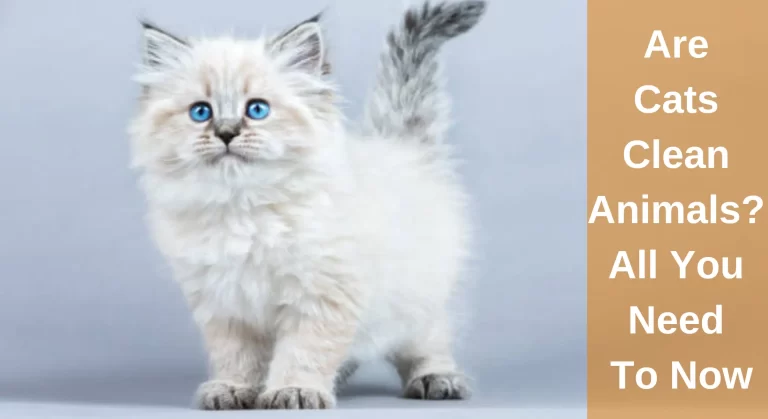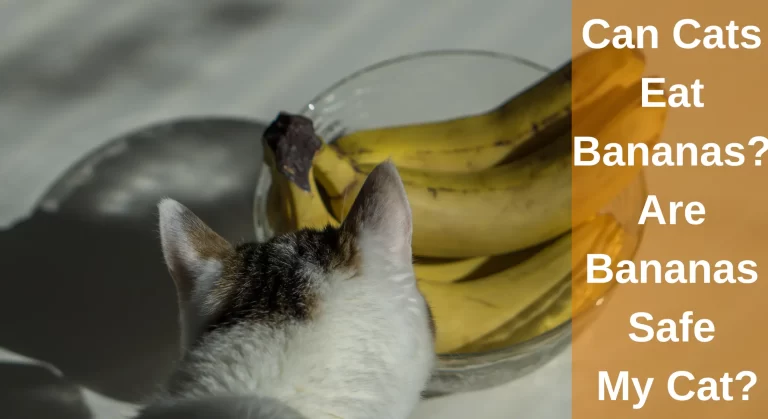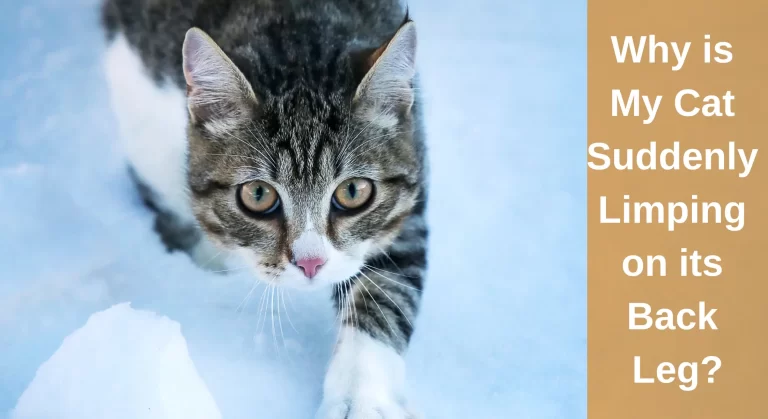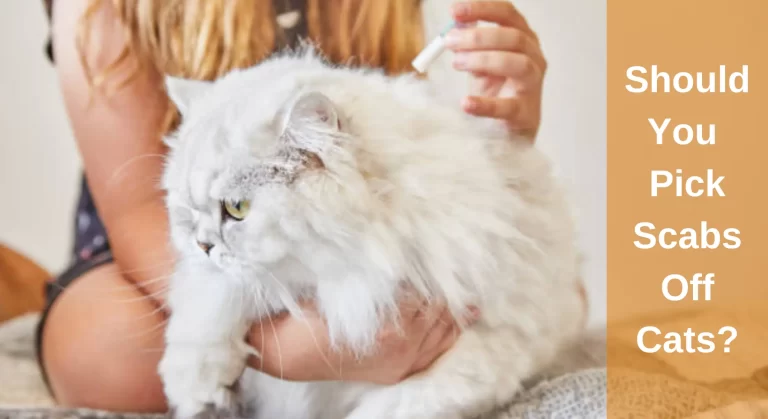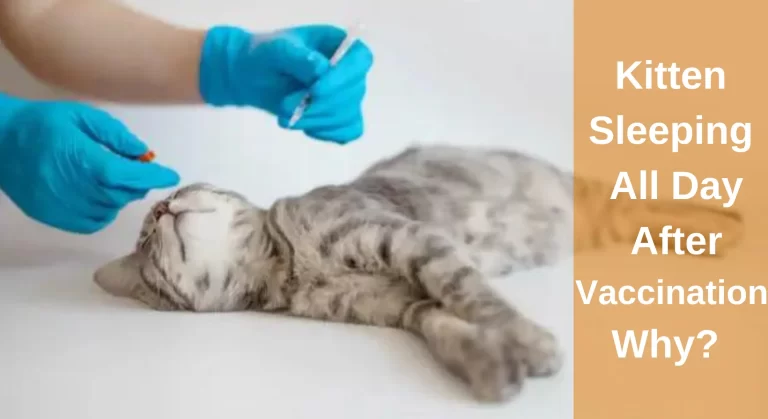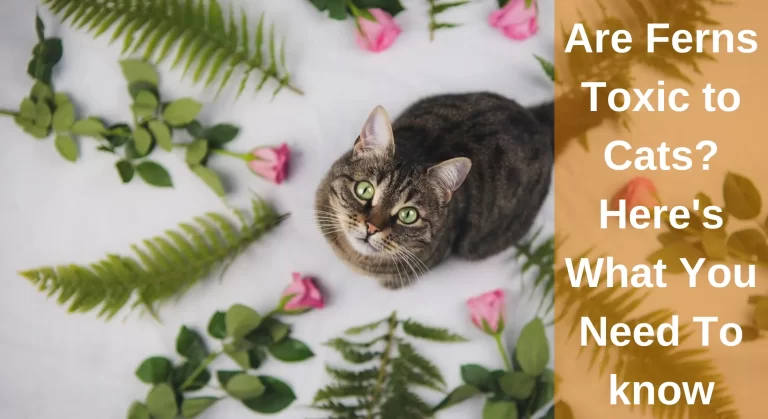Why is My Cat’s Hair Falling Out In Clumps? [Explained]
Feline alopecia is a prevalent condition among cat breeds in which they lose their hair partially or completely, with diverse or uniform patterns. The skin around the hair loss may be normal or red, bumpy, and scabby.
Several common causes of a cat’s hair falling out in clumps include allergies, in which cats develop an allergy to certain foods or allergens found in the environment, such as pollen and dust, which can cause hair loss. Hair loss can also be caused by parasitic infestations and fungi such as fleas, ticks, mites and ringworms, as well as some underline skin problems.
Seeing clumps of hair falling out of a cat is a cause of concern for cat owners. Here’s what you need to know about cat hair loss (alopecia) and the causes and treatment options.
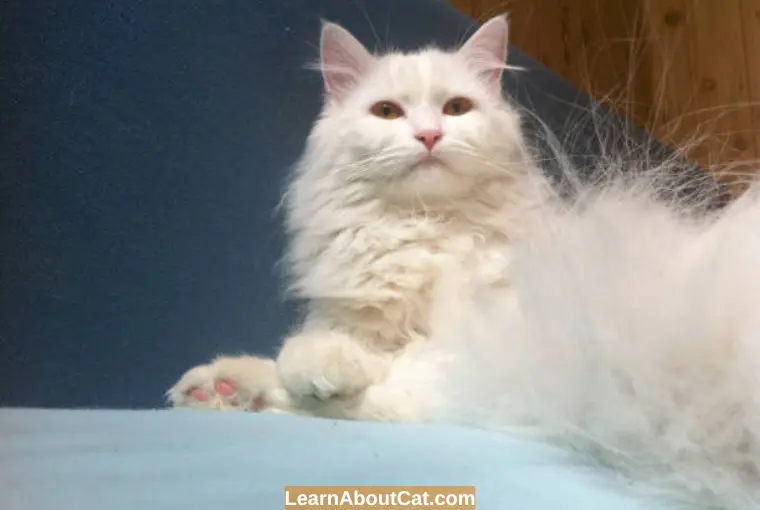
Reasons Cats Losing Clumps of Hair
Fur loss can be caused by a variety of factors, including:
Nervous illness like under-grooming or over-grooming. It can also be caused by hormonal imbalances, such as too much thyroid or high steroid levels in the body. Heredity is a lesser-known element. Cat alopecia is a condition that affects senior cats that have been diagnosed with cancer.
1. Allergies
Environmental and food-based allergies may be causing cats to lose clumps of fur. Inflammation, itchy skin and patches of fur loss are common symptoms of these allergies. The exact cause of an allergic reaction can be difficult to detect; therefore, a veterinarian should be consulted.
In cases where environmental factors cause allergies, your veterinarian may prescribe allergy medication. If allergies cause by food, you must change their diet for at least one week and feed them hypoallergenic cat food that is free of dairy, wheat, and beef.
2. Thyroid Gland Problems – Hyperthyroidism
Little or too much thyroid hormone in cats can result in hair loss. Hyperthyroidism in cats causes hair loss as one of the many adverse effects.
While touching or combing your cat, her hair might become dull, brittle, thin, or easily pulled out. It is recommended to use radioactive iodine and surgery to treat the condition.
3. Cancer
This is an uncommon cause of hair loss in cats; it’s far more likely that your feline’s hair loss isn’t significant. However, in cats, neoplasia can result in hair loss.
Another associated problem that develops due to cancer is paraneoplastic alopecia, hair loss accompanied by itching and damp skin.
4. Psychogenic Dermatitis – Stress
Some cats develop alopecia due to excessive grooming. Psychogenic dermatitis (PD) is a disorder in which your cat licks to the point of hair loss. Excessive grooming is frequently the result of stress or boredom.
You might find that your cat is stressed caused of a recent move or fear of another pet. A new pet or person may have moved in, or there could be conflict in a house with several cats. Changes to your cat’s surroundings are the best way to address this disease.
5. Due to the Presence of Fleas
What causes hair loss is the saliva of fleas, mites, lice, and ticks to scratch and lick, resulting in bald areas and blisters. Alopecia caused by fleas is most noticeable as patchy hair loss on the cat’s hind body parts.
6. Anxiousness
When cats are anxious, they lick and constantly scratch, losing their hair. Veterinarians call this “psychogenic alopecia.”
Cats will pick at their tummies, sides, and legs due to it. It’s more frequent in female purebreds that have an anxious temperament.
7. Fungal Infection – Ringworm
Another major cause of feline hair loss is a fungal infection. Adult cats’ hair becomes brittle and breaks off in areas due to ringworm, easily disseminated through contact with affected animals.
Reddish patches appear on kittens’ cheeks, ears, and paw pads, occasionally accompanied by a white or grey crust.
Also Read: Should I Quarantine My Cat With Tapeworms
8. Nutrient Deficiency
As cats become older, they lose their fur across large areas of their bodies. The hair seems to be dry beneath the skin, and any replacement fur is usually of a different colour. A lack of nourishment is assumed to be the cause of the disease.
It is particularly true for some cats as they age that they require more nutrients in their bodies. You can reverse the condition by adding nutritional supplements to your diet, such as powdered vitamins.
Is It Normal for Cats to Shed Clumps of Hair? And When to Worry about Your Cat’s Hair Loss
Hair loss in clusters that occurs regularly is a red indicator. The state of your cat’s coat is another symptom of hair loss. In every cat’s shedding cycle, hair sheds differently; some cats shed very little hair, while others lose quite a bit of hair.
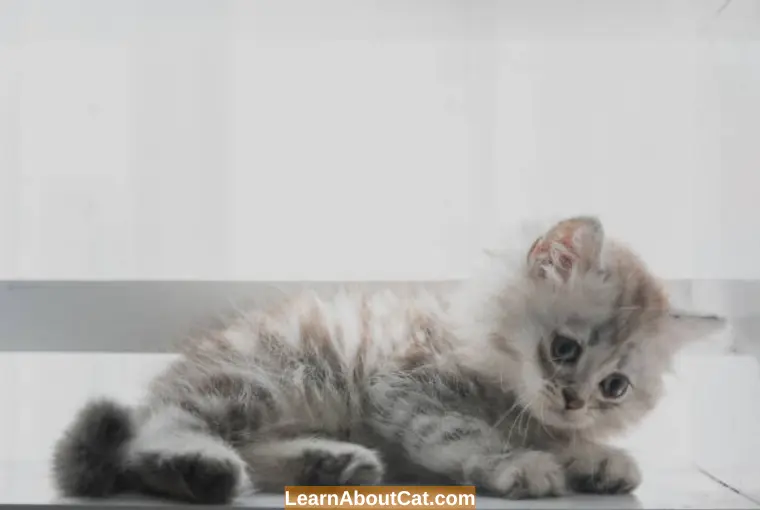
It is important to note that excessive shedding to the point that the coat becomes very thin should be considered a serious issue and will almost certainly require a vet visit. Sometimes, red or inflamed skin can indicate a disease under the hair.
Cats groom themselves frequently and eat a lot of hair, but if yours starts vomiting or spitting up hairballs, it might signify a hair loss problem. Hair trails will appear all over the place, but if clusters appear regularly, then you should be concerned.
The condition of your cat’s coat is another indicator of hair loss. A healthy cat’s coat will be smooth, silky, and clean as long as it has proper shed and growth cycles. A rough, raggedy texture may indicate stress, illness, or parasites.
Often, cats will “announce” such problems by excessively grooming themselves or biting their hair until they have bald patches or dirty coats.
Find Out: What Causes Matted Cat Fur?
How Much Hair Loss is Normal for Cats?
It is normal for cats to lose a small amount of hair each day. In spite of the fact that cats shed every day, large sheds will occur once or twice a year by them. Breed, environment, and other factors (among others) influence this.
What Causes Rapid Hair Loss in Cats?
Extreme shedding in cats is caused by several conditions, including:
- Itching or inflammation of the ears, legs, or any other part of the body
- Fleas.
- Ringworm
- Food or environmental allergies.
How to Keep Your Cat’s Coat Healthy?
During normal shedding cycles, you can contribute to your cat’s hair loss by brushing him/her with a quality pet brush.
Sudden and rapid hair loss should be addressed with a visit to the veterinarian. It is also essential to provide your cat with a good bath and to switch to foods made with natural oils.
A healthy, lustrous coat can also be achieved by applying topical oils, but ingesting oils are more effective.
Check Out: Homemade Detangler Spray for Cats:
How Can I Prevent My Cat From Losing Of Hair?
Keep your cat away from fleas to avoid parasite infections that might lead to hair loss. Providing your cat with cat toys and playing will keep her mentally active and reduce hair loss caused by neurotic disorders. The majority of feline hair loss, however, is unavoidable.
A few basic actions can help you avoid excessive shedding:
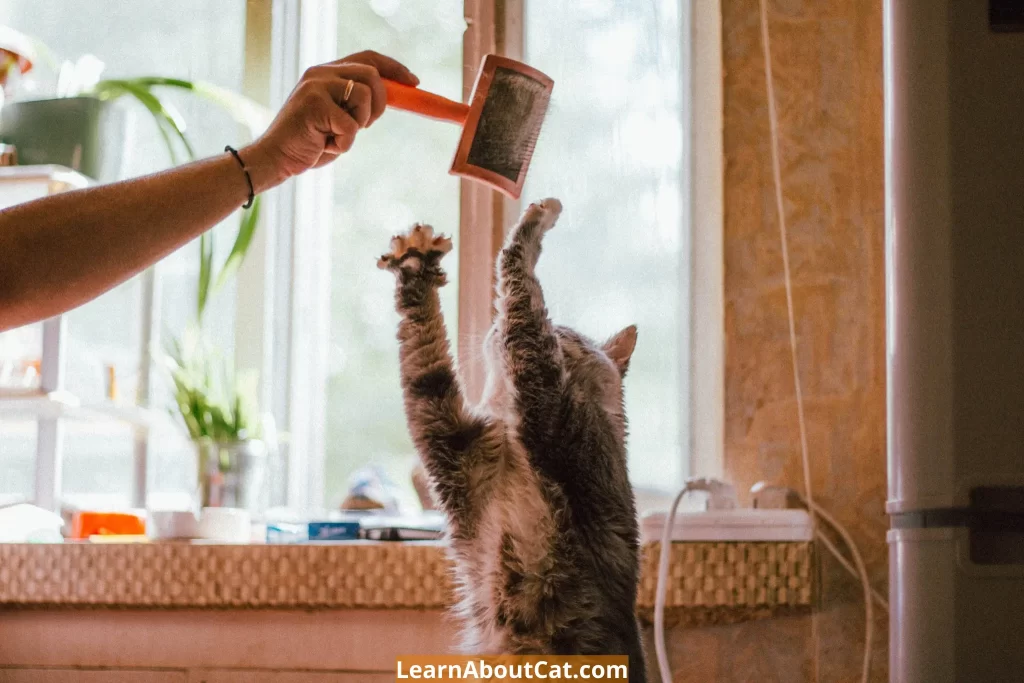
1. Cat Bath
Bathing your cat regularly might be beneficial to certain cats—this aids in the removal of loose hair and dead skin, which can obstruct new hair development.
On the other hand, bathing should be done with caution since it may deplete your cat’s natural oils, causing dryness and skin discomfort. Cats that require medicated shampoo or topical treatments may require more frequent bathing.
2. Brushing
Brushing your cat on a daily basis will assist in minimising shedding. Cats groom themselves naturally; however, brushing them regularly may be beneficial. Use the appropriate comb or brush for the length and density of your cat’s fur to avoid straining the fur or making the experience uncomfortable.
3. Cat’s Diet
Diet plays an important role in keeping your pet’s coat lustrous, healthy, and shed-free. A lack of nutrients might cause some shedding, so see your veterinarian about the best diet for your feline companion.
4. Lowering Cat’s Stress Level
Focus on lowering stress for your cat because psychogenic alopecia is linked to tension, concern, and irritation. Here are some ideas about how to get rid of it:
- Climbing poles and perches should be strategically positioned in front of windows. This may encourage your cat to follow her instincts and sit on high items to survey her surroundings.
- To improve her environment and create solitude, give her access to some cardboard boxes and paper bags.
- Play with her using interactive toys like a feather wand to pique her natural hunting instincts and help her burn off extra energy.
- A Feliway diffuser emits a synthetic replica of a cat’s pheromone.
Frequently Asked Questions
What are the most common health issues that cause cat hair and coat problems?
Your cat’s coat can be affected by various illnesses, but the most common include hormonal imbalance, metabolic disorders, digestive problems, parasites (both internal and external) and cancer.
What psychological issues could cause a cat to have hair and skin problems?
Stress, anxiety, and stress-related mental imbalances can also result in hair loss, cat skin problems, and some infections also cause skin problems.
The symptoms of many feline skin conditions are similar, including redness, rashes, lumps, baldness, and matted fur.
Why is my cat losing chunks of hair?
Acquired alopecia, this condition appears in cats who are born with a normal coat of hair but, as a result of an underlying illness or skin condition, lose their hair.
Many factors can contribute to this condition, ranging from parasites like mites to an allergy or a metabolic disorder like hyperthyroidism.
Wrap Up!
Since there are so many possible reasons, fur loss in cats can be difficult to diagnose. The goal is to keep a channel of communication open with your veterinarian and research the solutions that appear to be the best fit for you and your beloved pet.
Related Posts
Who is Isabella?
My name is Isabella, and I am a dedicated and knowledgeable cat enthusiast. With years of experience caring for cats and a deep love for felines, I made a mission to help other cat lovers navigate the challenges of cat ownership.

